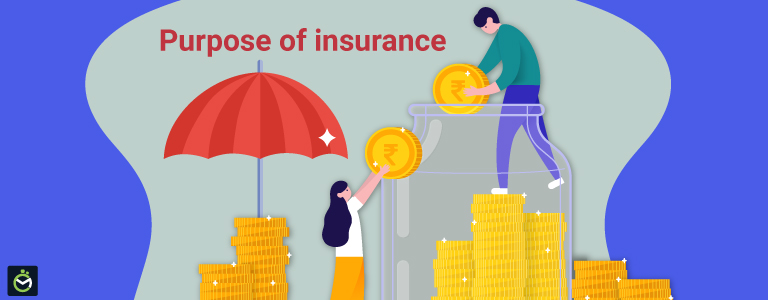Pacific Prime Can Be Fun For Anyone
Wiki Article
Pacific Prime for Beginners
Table of ContentsThe Only Guide for Pacific PrimeNot known Factual Statements About Pacific Prime The Greatest Guide To Pacific PrimeNot known Details About Pacific Prime Pacific Prime Can Be Fun For Everyone

This is since the information were accumulated for a period of solid financial performance. Of the estimated 42 million individuals that were uninsured, just about concerning 420,000 (about 1 percent) were under 65 years of age, the age at which most Americans become eligible for Medicare; 32 million were grownups in between ages 18 and 65, around 19 percent of all adults in this age; and 10 million were youngsters under 18 years old, about 13.9 percent of all kids (Mills, 2000).
These price quotes of the variety of persons uninsured are produced from the yearly March Supplement to the Existing Populace Study (CPS), conducted by the Census Bureau. Unless otherwise noted, nationwide price quotes of individuals without medical insurance and percentages of the populace with various sort of coverage are based on the CPS, the most widely utilized source of quotes of insurance policy protection and uninsurance prices.
Pacific Prime - The Facts

Still, the CPS is specifically beneficial since it produces annual price quotes fairly swiftly, reporting the previous year's insurance coverage approximates each September, and since it is the basis for a consistent collection of price quotes for greater than twenty years, enabling analysis of fads in protection in time. For these factors, in addition to the substantial use the CPS in various other research studies of insurance protection that are provided in this report, we count on CPS quotes, with limitations kept in mind.

The quote of the number of without insurance individuals broadens when a populace's insurance policy condition is tracked for several years. Over a three-year period starting early in 1993, 72 million people, 29 percent of the U.S. https://experiment.com/users/pacificpr1me. population, lacked protection for at least one month. Within a solitary year (1994 ), 53 million people experienced at the very least a month without insurance coverage (Bennefield, 1998a)
Six out of every 10 uninsured grownups are themselves utilized. Although working does boost the probability that and one's household members will certainly have insurance coverage, it is not a guarantee. Also members of family members with two full time wage earners have nearly a one-in-ten chance of being without insurance (9.1 percent without insurance rate) (Hoffman and Pohl, 2000).
Some Ideas on Pacific Prime You Need To Know
New immigrants represent a substantial percentage of people without health and wellness insurance policy. One evaluation has associated a substantial section of the recent growth in the size of the U.S. uninsured population to immigrants that got here in the nation in between 1994 and 1998 (Camarota and Edwards, 2000). Current immigrants (those that came to the United States within the past 4 years) do have a high price of being without insurance (46 percent), yet they and their kids represent simply 6 percent of those without insurance policy across the country (Holahan et al., 2001).The relationship between health insurance coverage and accessibility to care is well developed, as recorded later on in this chapter. Although the connection in between medical insurance and health outcomes is neither direct nor straightforward, a comprehensive scientific and health services study literature links health and wellness insurance coverage to enhanced accessibility to care, far better top quality, and boosted individual and population wellness standing.
Degrees of analysis for examining the results of uninsurance. This discussion of medical insurance coverage concentrates mostly on the U.S. populace under age 65 since practically all Americans 65 and older have Medicare or various other public protection. Furthermore, it concentrates especially on those without any type of medical insurance for any type of length of time.
All About Pacific Prime
The problems dealt with by the underinsured are in some areas comparable to those encountered by the without insurance, although they are normally less serious. group insurance plans. Uninsurance and underinsurance, nonetheless, entail clearly various plan problems, and the techniques for addressing them might vary. Throughout this research study and the five reports to adhere to, the primary focus is on individuals without any health and wellness insurance coverage and thus no assistance in spending for health and wellness care beyond what is readily available via charity and safeguard institutions
Medical insurance is an effective element affecting invoice of treatment because both clients and physicians reply to the out-of-pocket cost of services - https://www.imdb.com/user/ur179624537/. Medical insurance, however, is neither necessary neither adequate to get access to medical solutions. The independent and direct effect of health insurance policy coverage on access to health solutions is well established.
Others will certainly obtain the wellness care they require even without medical insurance, by spending for it out of pocket or seeking it from companies that provide treatment totally free or at very subsidized rates. For still others, medical insurance alone does not make certain receipt of care because of various other nonfinancial obstacles, such as a lack of healthcare companies in their area, limited accessibility to transportation, illiteracy, or linguistic and social differences.
Getting My Pacific Prime To Work
Official research regarding without insurance populaces in the USA dates to the late 1920s and very early 1930s when the Committee on the Cost of Medical Care produced a series of reports regarding financing doctor office sees and hospital stays. This issue important source became salient as the numbers of medically indigent climbed up during the Great Clinical depression.Report this wiki page